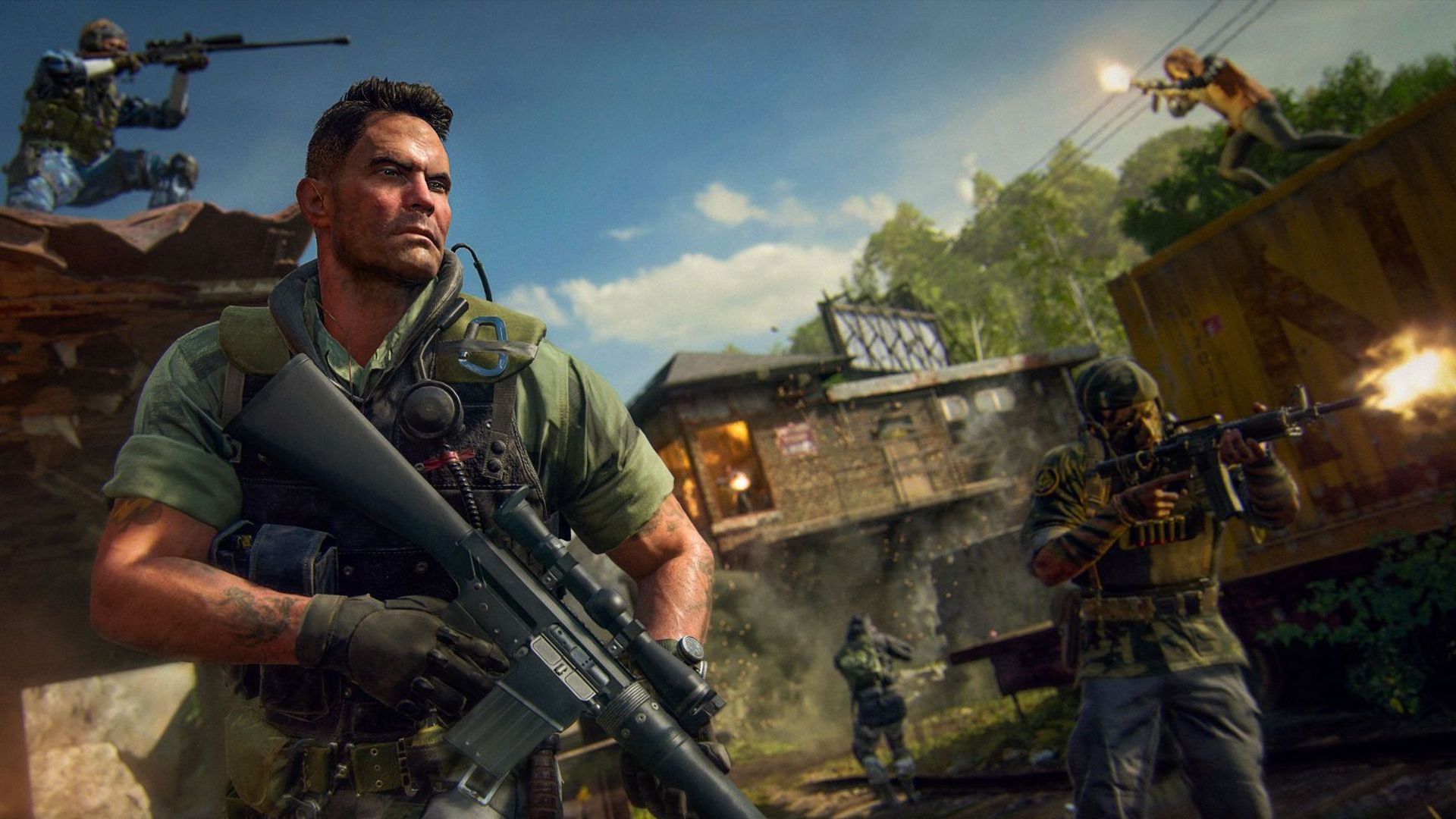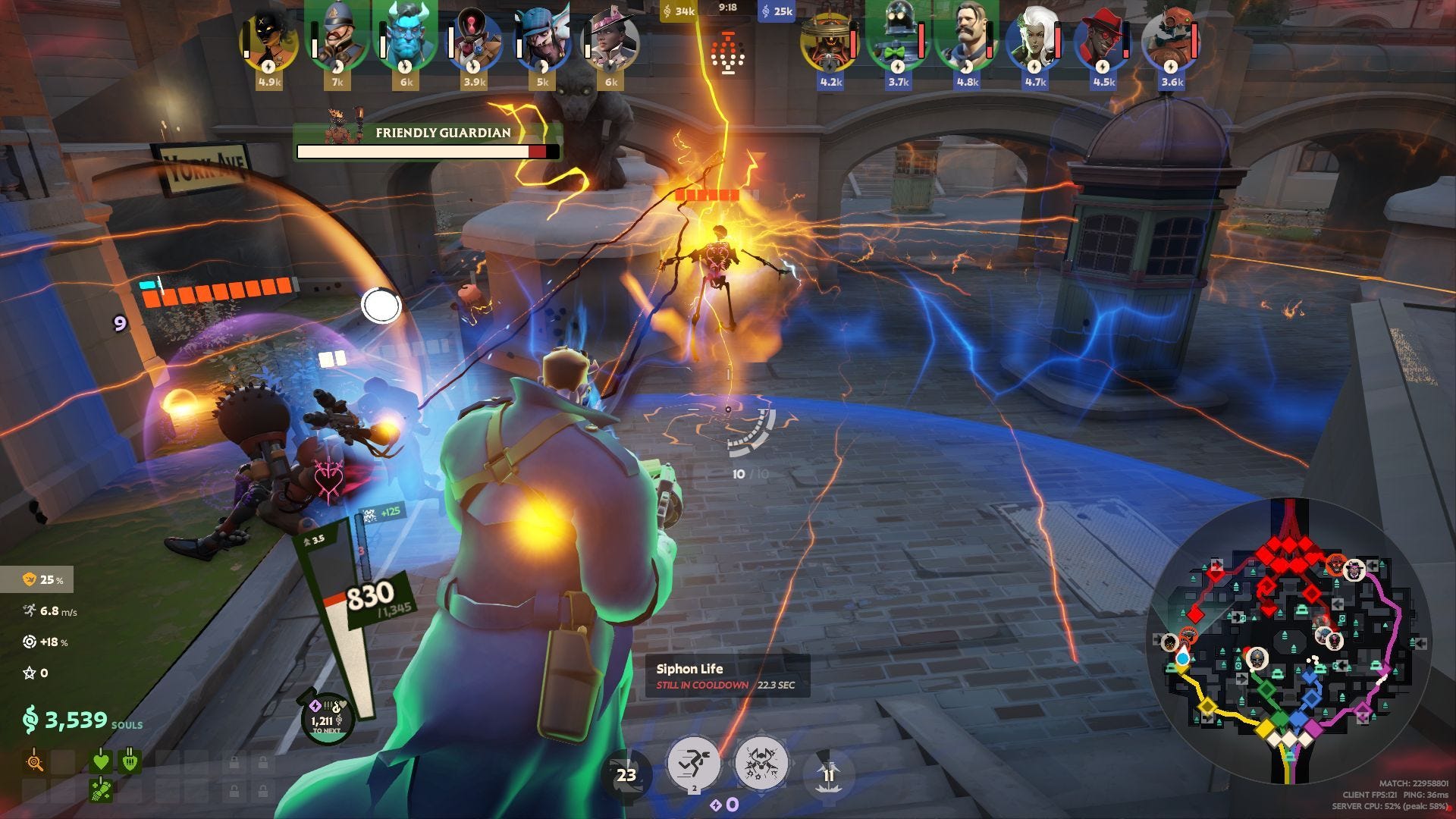Call of Duty’s greatest campaigns have offered one thing over all else: variety. Whether it’s the original Modern Warfare’s memorable behind-enemy-lines sniping of All Ghillied Up or Cold War’s KGB infiltration and hallucinogenic episodes, it’s those missions that take you out of the standard first-person shooter cadence that foremost stick in the memory. While we’re yet to play it, it’s therefore encouraging that Black Ops 6 is aiming to pack its campaign full of these moments, so much so Jon Zuk, associate creative director at Raven Software, tells me it’s treating each of the levels as “its own mini blockbuster”.
Indeed, Call of Duty is at its best when presented as playable cinema. Tense, tight corridor shootouts open up into large-scale explosive set pieces and one-off experiments – not dissimilar to how Mario platformers introduce ideas for individual levels but with AC-130 gunships instead of animal costumes. Set against the backdrop of the Gulf War in 1991, Black Ops 6 is playing in the shadowy political grey areas that lend themselves to spycraft and subterfuge. So while the campaign will undoubtedly have its louder moments, it’s given Raven more scope to experiment with different styles of gameplay.
“We wanted to make sure that each one was memorable and could stand alone,” says lead narrative producer Natalie Pohorski, talking about missions in Black Ops 6. “Each one has unique gameplay opportunities, unique objectives, and how you tackle those.” It’s a sentiment Jon Zuk agrees with, adding, “We didn’t want to just create three or four levels that are fun to play, but all kind of feel the same. We wanted to make sure each mission had its thing, its own special, unique sauce to it, as it were. So variety was number one throughout the entire process for us.”
Variety was number one throughout the entire process for us.Variety has always been a priority for Raven when it comes to designing COD campaigns. There have always been interesting ideas hidden away, even in the games that are less fondly remembered. It’s something that Zuk, who has been at the studio since 1996, recalls as being a key aspect of their gameplay design:
“That’s always been something that we’ve really been interested in doing. Federation Day back on Ghosts really had the variety. The ‘looking at your target from afar, then zip lining, then repelling on the side of the building and then doing some sneaking or combat and then full-on combat and then a big epic moment to end the level’.”
Zuk also cites a chapter near the end of the original Black Ops as one of his favourite Call of Duty missions. Rebirth tells its tale from two separate perspectives as the player takes control of Woods and Hudson at different points in time during the same event. “It really intrigued me because it’s like telling a story from two different perspectives and kind of seeing that your version of the truth is not always the truth or that the truth is malleable.”
The truth and deciphering just who to believe is at the crux of Black Ops 6’s story, but this isn’t the only aspect borrowed from this particular 14-year-old mission. High Rollers looks set to be one of 6’s tentpole levels – a high-risk heist with a casino vault as its target. Players take control of multiple members of the team as they switch perspectives over its course, creating distraction opportunities and executing security breaches in tandem. While not offering the malleable nature that something like GTA V did with its multiple-protagonist heists, it does open up the playbook for fun storytelling possibilities for Raven.
“Ahead of time they have the mission briefing where they’re each like, okay, I’m going to do this, you’re going to do this, you’re going to do this,” explains Pohorski. “They’re all undercover, and it’s sort of like a passing of the baton is really how it plays out.”
“What we wanted to tell there was kind of the perfect heist mission where everybody’s doing their part and so there’s a very particular plan that’s taking place and you’ve got all of the characters taking place or taking part in this and it’s got to work in a certain clockwork type fashion for them to pull off this event”, Zuk confirms.
What we wanted to tell there was kind of the perfect heist mission where everybody’s doing their part.That briefing takes place in the expanded mansion hideout you’ll get to explore in Black Ops 6, an evolution of Cold War’s safehouse location that lets you talk to other characters, uncover secrets by exploring, and interact with the all-important evidence board.
Another distinctive element of Cold War was its willingness to let you holster your weapon for an extended amount of time – a virtually alien idea compared to the majority of what Call of Duty stands for. A prime example of this was the memorable mission Desperate Measures, which had you infiltrate a high-security KGB building, talking your way through checkpoints and wearing disguises as Raven fully embraced the espionage lifestyle. It was more Hitman than Call of Duty and we’re set for similar antics in Black Ops 6.
“Most Wanted, which you’ve seen in the trailers, that one we do have more of a pick your way of how you want to accomplish this part of the mission”, states Zuk about a mission taking place at a political gala. “There’s two distinct parts of the mission where you can choose how you want to play it. And for the replayability factor, certainly more so in the first part, there are multiple ways to accomplish a goal. So we think that players are really going to do one and they’re going to talk to their friend and say, ‘I talked to the senator’s wife and did A, B and C’, and he’s going to be like, ‘Oh, I didn’t do that at all. I was trailing this shady character and ended up meeting, accomplishing my goal this other way’. And then that crosstalk gets people interested, well, what did I miss? I should go back and check that out and see what the other path is.”
“Some of the missions have those options of like, okay, these are the objectives, and then you can kind of get the lay of the land and choose which one you want to tackle first,” Pohorsky confirms. “If you want to go in hot or stealthy, there’s options for that too. So it kind of depends on the mission, but I think that’s where some of the replayability comes in with the political gala. This time you want to blackmail the senator, or this time you want to hack into a silent auction.”
Where possible we try to allow you to play it how you want.While variety is at the forefront of Black Ops 6’s campaign, so is flexibility and that desire to approach objectives the way you want to. The game may lead you in a certain direction or politely suggest a wise method, but that doesn’t mean you’ll need to listen. Crucially, apart from a couple of occasions, you won’t be punished for doing something ‘the wrong way’. Auto-fail stealth, for example, will be a highly rare occurrence, says Zuk.
“There are moments where we are very much wanting the player to play stealthily and be careful and quiet, but where possible we try to allow you to play it how you want,” he explains. “And I would say more times than not, you can go loud if that’s the way you want to play it. And I can only think of a couple of instances where we sort of don’t allow that because it didn’t fit with the story. But yeah, I would say in the majority of cases where we have those stealth moments where we’re kind of recommending guns down and being more of a spy, certainly we know that people like being action heroes too, so we let that happen.”
“You’re still getting all of those blockbuster combat moments for sure”, confirms Pohorski. “I mean that’s the bread and butter, but in addition to that, we’re layering in these other elements. So yeah, I think I love the more stealthy side. I like going in undercover, so it’s been a lot of fun for me to play.”
That variety is promised across the board and while only a couple of examples have been name-checked here, the plan is that no one mission stands out as being Black Ops 6’s ace in the pack. Instead, Raven has endeavoured to keep the campaign’s chapters consistently engaging and surprising in their setup.
“We’re not banking on any particular mission doing that [stealing the show]”, says Pohorski. “I think what’s so great about the variety is that depending on what kind of player you are, there’s different missions that you like. And I mean I have personal story elements that I like in certain missions, but then the way that I get to play in another one might be different.”
Black Ops 6 is a linear story, so there is not a branching ending for this one.The Black Ops series is known for its twisting stories, full of memorable characters and globetrotting locations. With an added emphasis on gameplay variety, Black Ops 6 is shaping up to be an exciting possibility. Throw in the different ways to approach these missions and the expectation is that you’ll want to replay certain parts too.
These gameplay options won’t necessarily have an impact on the story as a whole, though, as the plot itself is locked-in this time around with no multiple or hidden endings to go in search of. “Black Ops 6 is a linear story, so there is not a branching ending for this one”, Zuk states. He also promises a slightly longer campaign than Cold War’s, of which its short length was a main criticism held against it. We’ll find out just how much of Black Ops 6’s campaign lives up to the promise when it arrives on October 25th.
Simon Cardy is loves it when the words “blockbuster” and “spy” are put together. Follow him on Twitter at @CardySimon.









































